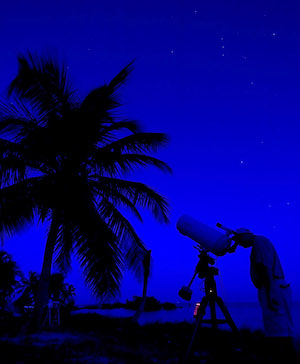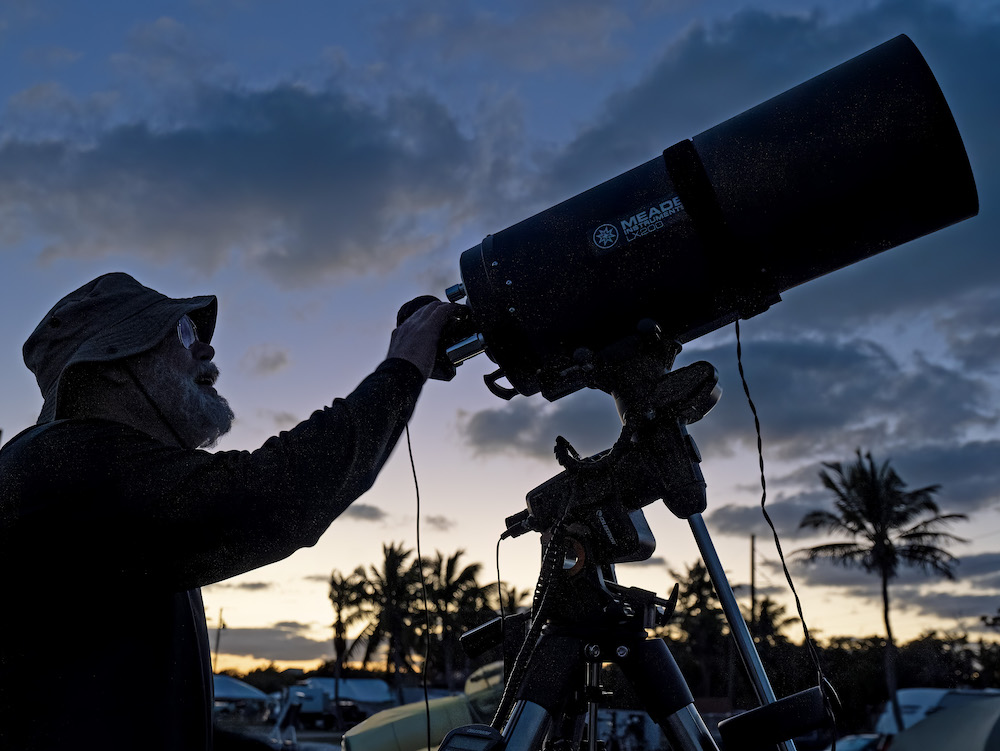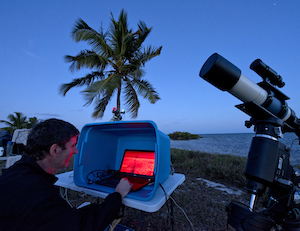For some people, seeing stars means spotting Ryan Gosling at an upscale eatery — or Taylor Swift and her pals sharing secrets on a girlfriends’ getaway.
But for hundreds of amateur and professional astronomers and astrophotographers from around the globe, “seeing stars” has a very different definition. A definition, in fact, that’s about as far away as possible from the realm of film and music celebrities. And the best place to see their kind of stars is the Lower Florida Keys.
Actually, the Lower Keys are so well known as a stargazer’s paradise that, for four decades now, the tranquil region has been the site of an exclusive gathering called the Winter Star Party — a gathering beside the Atlantic Ocean that provides an unparalleled opportunity for experts and enthusiasts.
The event’s primary attraction for astronomers is the 180-degree viewing of the Southern Cross and other constellations, comets and stars that are visible from that part of Florida Keys island chain — virtually the only place in the continental United States where they can be seen. The Lower Keys’ southern location, clear “steady” skies and relative absence of large-scale artificial lighting at night combine to create stunning viewing conditions.
Of course, it doesn’t hurt that the Keys’ subtropical winter temperatures mean star watchers can set up their telescopes and enjoy the deep-sky spectacle in comfortable “shirtsleeve” weather — without needing heavy jackets or endless thermoses of hot coffee to stay toasty and motivated.
Each February (typically during the new moon), the welcoming weather and wide-open skies combine to entice scores of astronomers, astrophotographers, telescope makers and more to pack up their gear and head down the Florida Keys Overseas Highway to the Lower Keys.
This year, they’ll gather Monday through Sunday, Feb. 5-11, at two scout camps on the aptly-named Scout Key for the 40th annual Winter Star Party — hosted, as always, by Miami’s Southern Cross Astronomical Society.

Steve Miller peers through his telescope during a past Winter Star Party. Begun in 1984, the event is organized by the Southern Cross Astronomical Society. (Photo by Dan Baker, Florida Keys News Bureau)
Founded in 1922, the SCAS is one of the oldest amateur astronomical societies in the entire Western Hemisphere. Its mission is to improve the awareness, understanding and enjoyment of astronomy — and the Winter Star Party does just that.
But what do you DO at a Winter Star Party?
During the day, participants can attend lectures and presentations by nationally recognized guest speakers, research and purchase astronomy equipment from on-site vendors (this year to include the noted Telescope Engineering Company), participate in the popular annual beach walk and laser tour, learn what’s new in the field and share observing ideas and astro-imaging techniques with fellow aficionados.
Guest speakers typically range from award-winning authors and celebrated astronomers to solar system experts and planetary photography specialists. Lecture topics for this year’s gathering include celestial navigation, astrophotography, “Culture of Astronomy” and “Zen and the Art of Astronomical Pursuits.”
But no matter how intriguing the presentations might be, the action really heats up when the sun goes down. That’s when the covers come off the expensive, highly prized telescopes — some of them so massive that it’s necessary to climb a ladder to gaze through their lenses — and the heavens come alive for those whose passion is viewing them.
When that happens, all eyes are on the sky and the timeless, truly awe-inspiring spectacle it provides. And nobody on Scout Key is thinking about Ryan or Taylor at all.


